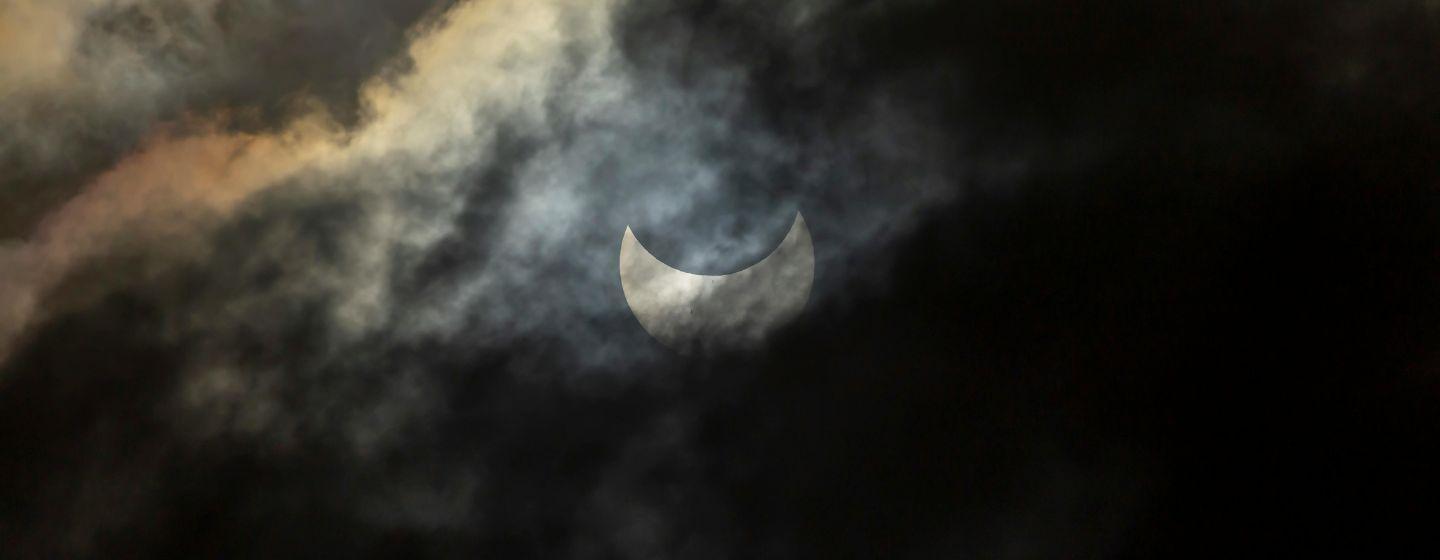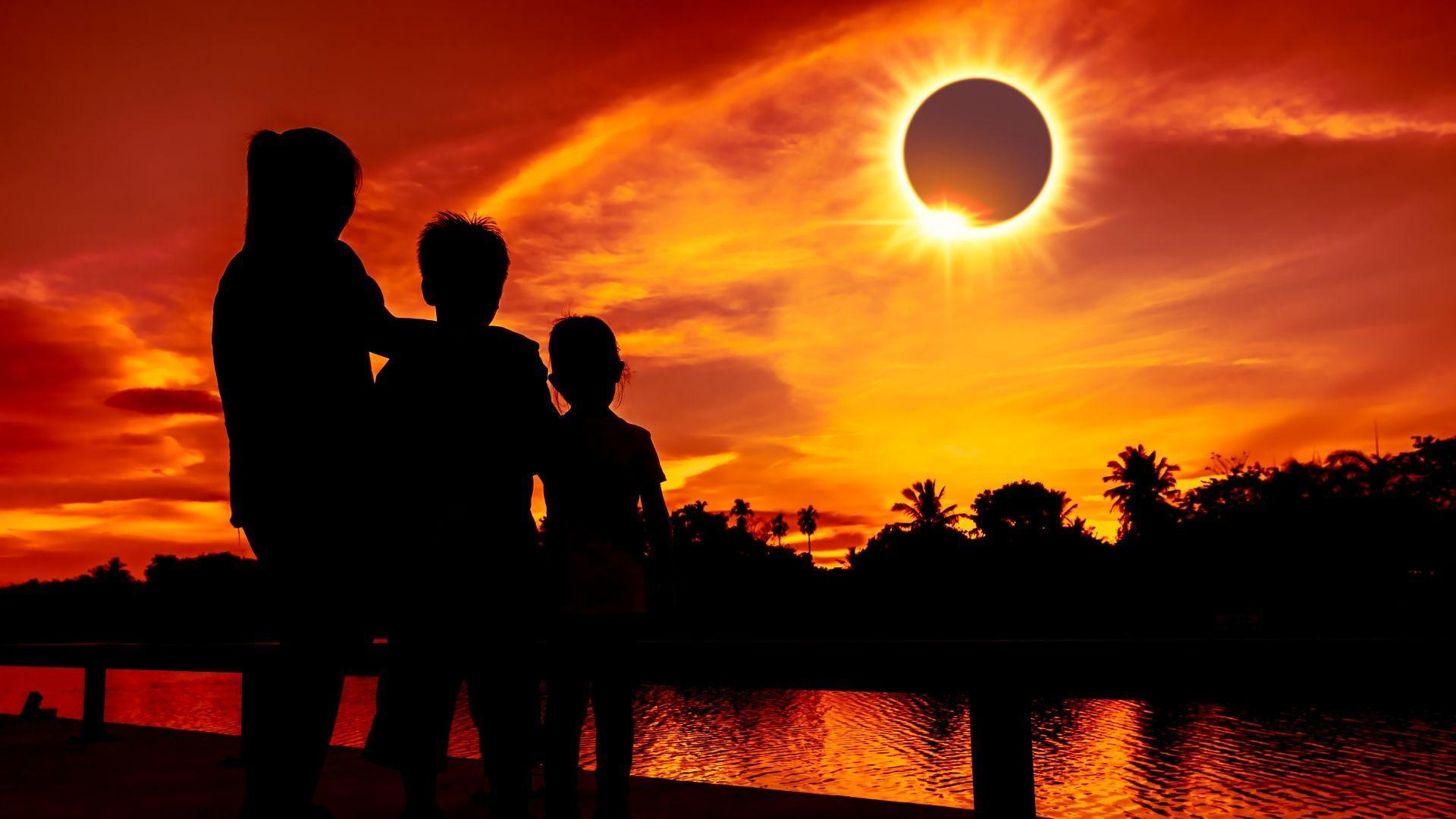Chasing the Solar Eclipse


One of nature’s most spectacular sights will be on display in parts of North America on Monday, April 8.
The eclipse will first be visible in Mexico and Texas and then heads north through Oklahoma, Arkansas, Missouri, Illinois, Kentucky, Ohio, Pennsylvania, New York, Vermont, New Hampshire and Maine before continuing through Quebec, New Brunswick and Prince Edward Island. Here’s a map of its path.
In the U.S., totality (when the Moon is fully covered) will begin in Texas at 1:27 PM CDT and will end in Maine at 3:35 PM EDT. The first location in continental North America that will experience totality is Mexico’s Pacific coast at around 11:07 AM PDT.
During a total solar eclipse, the Moon passes between the Sun and Earth, completely blocking the Sun and casting a shadow on the Earth’s surface. Where that shadow lands on Earth is known as the path of totality. Only the Sun’s corona, the outermost point of the Sun’s atmosphere, is visible at 100% coverage. The inner black circle of the eclipse, called the umbra, is where the shadow is complete, and an eclipse of the Sun is total.
Need a visual? Watch this Sci NC one-minute video about solar eclipses.
North Carolinians witnessed a total solar eclipse in 2017. This time, we’ll see a significant portion of the Sun covered by the Moon but it won’t be a total eclipse. People in our state will start seeing the Sun being covered just before 2 PM. The Moon will cover the maximum amount of the Sun at approximately 3:15 PM.
And since North Carolina runs about 560 miles east-to-west, how much of the Sun will be obscured varies by your location. Eclipse watchers near Boone will see about 86% of the Sun covered by the Moon. Around Raleigh about 78% of the Sun will be eclipsed. Those in Wilmington will see just over 70%.
That astronomical amazement is, of course, all dependent on clear skies.
The good news for NC eclipse chasers is that the North Carolina Science Festival runs April 1–30, so the timing is perfect to attend an eclipse-related event. Visit the festival’s calendar to find dozens of astronomy-related events, many of which offer viewing opportunities.
“It’s awesome that the solar eclipse will happen this year during April’s NC Science Festival,” said Erik MacIntosh, the festival’s program manager. “It’s going to be so much fun experiencing this rare astronomical event with our communities, and to use it as an opportunity to learn about astronomy and connect to our bigger statewide, monthlong celebration of science.”
If you’re like Doug Knight, an assistant professor of engineering physics at Lenoir-Rhyne University in Hickory, you want to conduct your experiments in the middle of the path of totality.
So, Knight is taking a group of his students to Arkansas to launch multiple experiments on high-altitude balloons. They will bring with them experiments designed by students from seven North Carolina community colleges. Those experiments will get a test run during the Community College High Altitude Ballooning Team Challenge, a NASA funded program which is run by NC Space Grant.
Teams will launch weather balloons with student-designed experiments during the competition. They will give their cube satellite experiments to Knight, who will take them to Arkansas for launch.
“This is an opportunity to witness one of nature’s most fantastic shows and do real science at the same time,” said Knight. “We’ve been designing and testing for a long time, and we’re ready to fly.”
Watch this Sci NC story about experiments the Lenoir-Rhyne team performed during the 2017 eclipse.
No matter where you are in the path of totality, the most important rule is to use ISO-certified, safe solar glasses. Regular sunglasses are not safe for viewing a solar eclipse. You can buy the appropriate glasses here. Other viewing methods, such as pinhole projectors, will also work.
And if you like to plan, the next total solar eclipse visible in the U.S. will be August 23, 2044. The next total eclipse visible in North Carolina will be May 11, 2078.
Explore the spectacular cosmic phenomenon of a total solar eclipse. In April 2024, the Moon’s shadow is sweeping from Texas to Maine, as the U.S. witnesses its last total solar eclipse until 2044. This extraordinary astronomical event will plunge locations in the path of totality into darkness for more than four minutes – nearly twice as long as the last American eclipse in 2017. Learn how to watch an eclipse safely and follow scientists as they work to unlock secrets of our Sun – from why its atmosphere is hundreds of times hotter than its surface, to what causes solar storms and how we might one day predict them.
The Great American Eclipse premieres Wednesday, 4/3, 9 PM on PBS NC & the PBS App.

Monday, 4/8, 12 PM
Joined by NASA scientists, you can learn how to watch an eclipse safely, discover what eclipses can reveal to scientists about the secrets of the Sun, and hear from the eclipse festival attendees experiencing the last total solar eclipse across the United States until 2044.